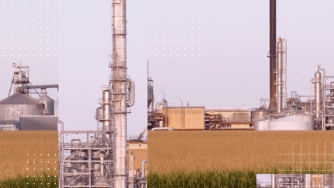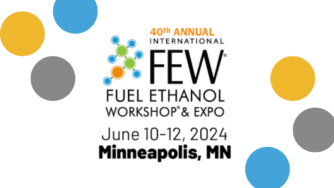The world started taking action to reverse damage to the ozone layer in the mid-1980s. This layer of the earth’s stratosphere absorbs more than 95% of the sun’s high-frequency ultraviolet light that might otherwise be harmful to life on earth. Researchers first observed in 1973 that ozone in this layer was being depleted.
In the following years, more evidence was collected, and an understanding of why it was happening was developed: man-made gases released into the atmosphere — including chlorofluorocarbons (CFCs) used in refrigeration systems — were steadily destroying atmospheric ozone. In 1987 the Montreal Protocol, a treaty designed to protect ozone by phasing out the use of CFCs and other ozone-depleting substances, was universally ratified by the members of the UN. This was huge, and by UN standards very fast: only 14 years from the first discovery to a worldwide treaty. By 2012, 98% of the ozone-depleting substances targeted in the Montreal Protocol had been phased out, ozone levels in the stratosphere were shown to be improving, and climate models showed the ozone layer was expected to return to its 1980 levels by 2070.
This was one of the earliest signals that humanity could work together through regulation, incentive and innovation to help restore the environment and reverse some aspects of climate change.
By the time the Montreal Protocol was signed, other human-induced atmospheric changes were also being observed. Researchers were warning of climate change in general and global warming in particular caused by other common gas emissions: carbon dioxide, methane, nitrous oxide, and several other gases that became collectively known as “greenhouse gases” (GHG) and their equivalents (GHGe). These gases worked either directly or indirectly to enhance the greenhouse effect, which caused more of the sun’s energy to be retained in the atmosphere, effectively warming the planet.
On the heels of the Montreal Protocol, the Intergovernmental Panel on Climate Change (IPCC) was formed by the UN in 1988. The IPCC’s mission was to report on the science of climate change: data collection and reporting; climate change causes; how can we expect things to change in the future; etc. Two of the main products of the IPCC have been a series of six Assessment Reports (1990-2021) that provide assessments of the latest data and model predictions available from the scientific community, and three Guidelines for National Greenhouse Gas Inventories (1996, 2006, 2019) that provide a framework for calculating a country’s greenhouse gas inventory.
The Montreal Protocol was a single agreement negotiated through the UN. To handle the broader needs of negotiating new treaties for addressing climate change the United Nations Framework Convention on Climate Change (UNFCCC) was established in 1992. After several years of discussion and negotiation guided by the UNFCCC, the Kyoto Protocol was signed in 1998. The Kyoto Protocol laid the groundwork for many future carbon programs, both public and private:
- Kyoto implemented a cap-and-trade system for nations to meet their emission targets and two mechanisms for funding emission reduction projects between nations: the Clean Development Mechanism (CDM); and the Joint Implementation (JI). These provided the first large-scale mechanisms for one organization to pay for greenhouse gas reductions elsewhere which in theory would have a bigger impact than if they had reduced their own emissions.
- Methodologies were developed within the CDM and JI to define many processes for predicting, measuring, validating, and reporting the actual emission reductions expected from emission-reduction projects. Eventually, the CDM and JI would also highlight how accounting oversights by well-intentioned actors and deliberate gaming by others could distort the benefits of carbon credits and reward bad actors. This led to policy refinements needed to reduce risk and build or maintain confidence in the credits offered by carbon programs. The lessons learned in the CDM and JI programs strongly influenced future greenhouse gas programs.
- Kyoto established commitments for ratifying nations to reduce their greenhouse gas emissions while recognizing the differences in nations’ technical and financial abilities at different stages of development. Industrialized countries had larger, more advanced economies and were responsible for most historical and current emissions, so they were expected to make more significant financial contributions and steeper emissions cuts. Developing nations were given more runway to continue the energy-intensive development of their economies.
- Kyoto focused reduction efforts on the most important greenhouse gases:
- Carbon dioxide (CO2)
- Methane (CH4)
- Nitrous Oxide (NO2)
- Hydrofluorocarbons (HFCs, a group of related gases common in industrial use)
- Perfluorocarbons (PFCs, a group of related gases common in industrial use)
- Sulfur hexafluoride (SF6)
- Nitrogen Trifluoride (NF3, added in 2012 as part of the “Doha” amendment to the Kyoto Protocol)
The gases other than CO2 were included because they are far more powerful as greenhouse gases than CO2, so even small amounts of them can have a dramatic impact. Methane, for example, has a 100-year “global warming potential” of ~25, meaning a ton of emitted methane will absorb about 25 times as much energy as a ton of emitted CO2. Thus, the global warming potential of SF6 is nearly 23,000.
Learn more by reading The Definitive Guide To Carbon and Climate Commitments.



